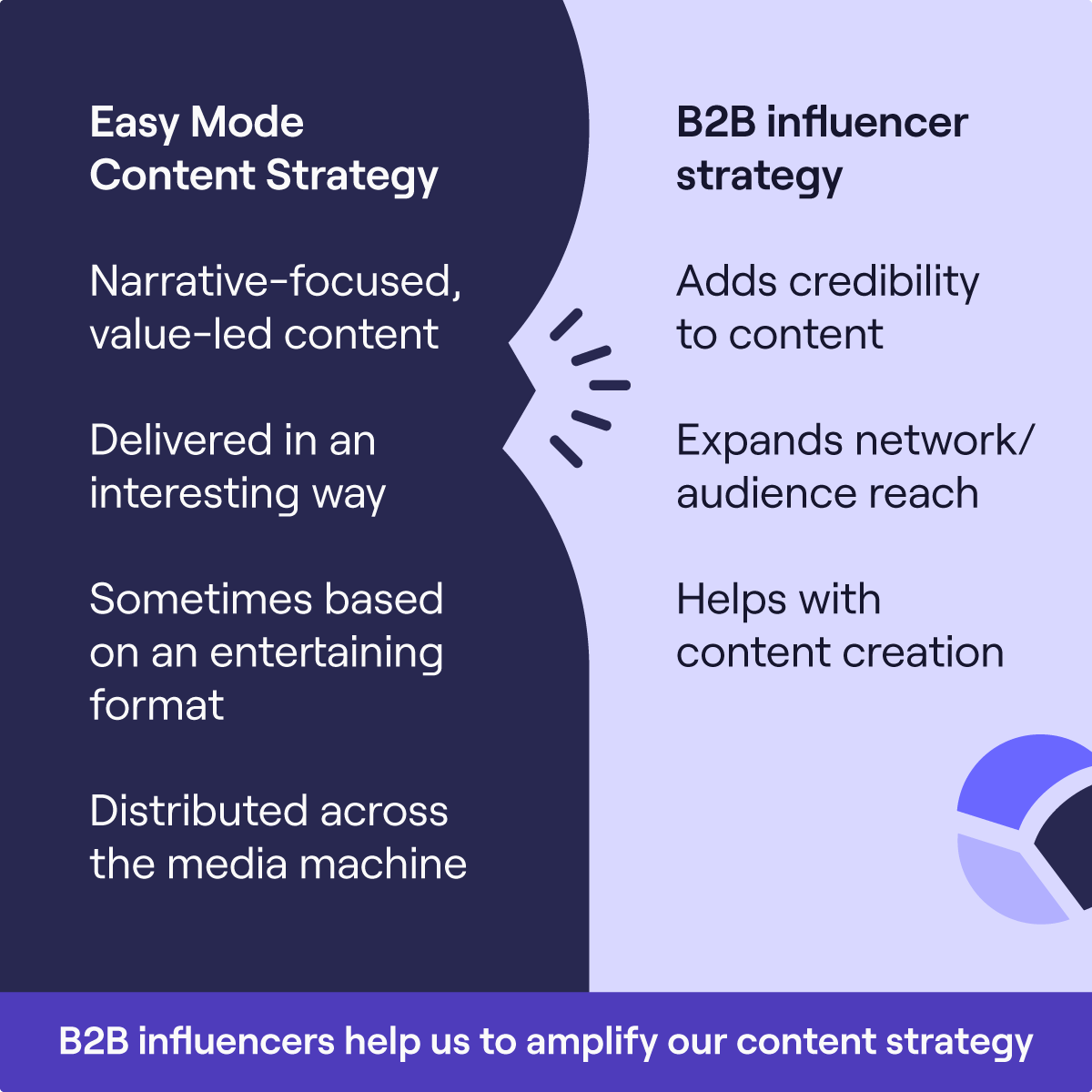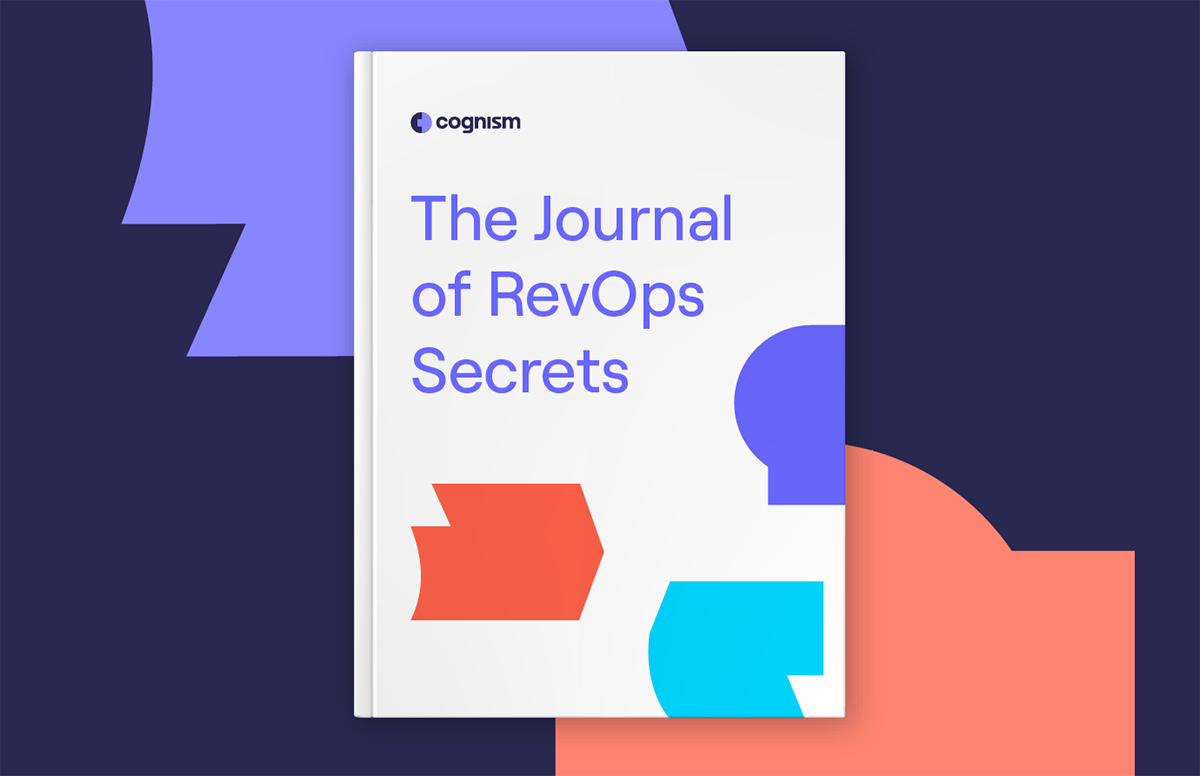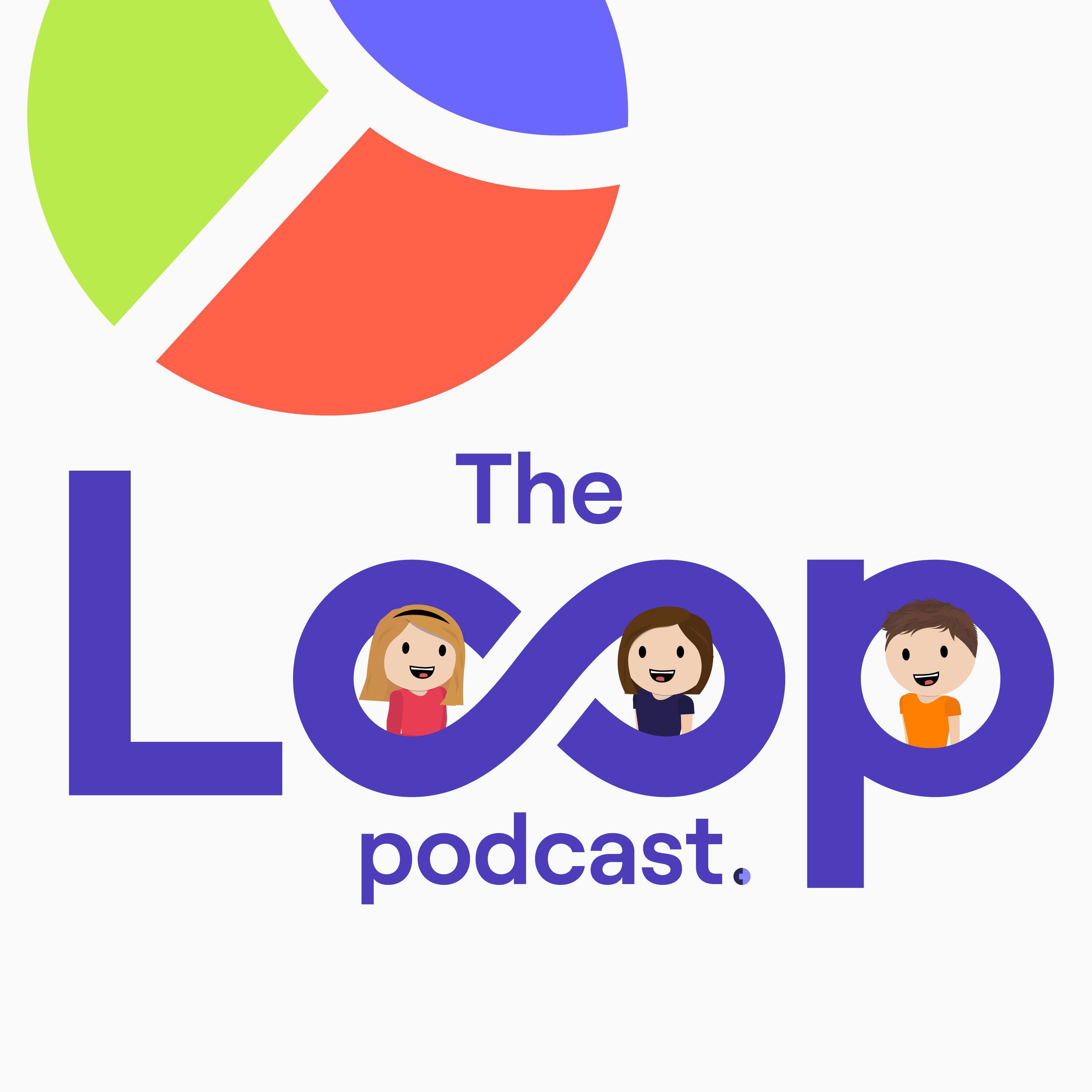B2B Demand Generation Funnel: How To Optimize Your Strategy
%20(5).png)
Recently, Cognism made the switch from a lead generation to a demand generation funnel.
The marketing team at Cognism saw that it took 25 inbound versus 500 content marketing qualified leads (MQLS) to close a deal.
Inbounds comprised 85% of our closed-won revenue, while content leads comprised only 15%.
So... what does this tell us?
That B2B marketing teams must focus on encouraging potential customers to come inbound.
These insights encouraged Cognism to switch from lead generation to a demand generation marketing strategy.
This helped us accelerate and scale towards $50m + ARR and deliver at least 50% of our revenue targets.
What is a demand generation funnel?
A demand generation funnel is a visual representation of all the stages that a typical B2B buyer goes through, from their initial interaction with your brand to becoming a customer.
The demand generation funnel seeks to create demand for a product or service and increase brand awareness.
To understand a demand generation funnel, it might first be useful to understand a lead generation funnel.
In traditional lead generation methods, valuable content that businesses know their customers will want is held behind a digital gate - in other words, they need to input their email address to get the information.
Fueling the marketing and sales teams with a list of ‘interested’ people and their contact details to follow up on.
💡 Learn about the different lead generation companies and services available on the market.
But a demand generation approach turns this idea on its head. Believing that a prospect downloading content doesn’t equal intent.
How many times have you provided your email address for a piece of content without any intention to buy from the company who produced it?
So instead, demand generation focuses on the only real indication of buyer intent. Which is inbound hand raisers. People who have come to your business requesting to speak to a salesperson to view a demo.
Demand-generation marketers focus on creating compelling, value-led content that encourages these prospects to come inbound and request further information.
This content is ungated e.g. there is no exchange required to access it. The aim is to provide value up front, with no friction, creating memorable, valuable experiences that build trust with the buyer.
By understanding, optimising and implementing targeted strategies at each demand generation funnel stage, you can effectively drive demand, build relationships with potential buyers and increase conversions.

Why do you need a B2B demand generation funnel?
Many stakeholders, especially sales teams, might be apprehensive when switching to a demand-generation marketing strategy. Especially when traditional lead gen has been the norm for so long.
But the switch to demand generation can help optimise your B2B sales funnel.
Marketers want to generate and fulfill their MQL targets, while sales want to close as many of these as possible.
A demand gen approach ensures you generate high-quality inbound leads that close at a far higher rate.
Assumed intent is not good enough anymore, we can’t reliably make marketing decisions based on guesswork, and prematurely sending an MQL to sales can do more harm than good and damage your sales-qualified opportunity rates.
A demand gen approach means that your sales team will need far fewer calls and activities to convert those declared intent inbounds into closed deals than they would for the low-quality content inbound leads.
This means your sales reps can focus on high-quality leads and specialise their efforts towards their outbound strategies rather than content leads.
This can also improve sales and marketing alignment. (A lack of alignment can cost $1 trillion annually!)

What are the stages of the demand funnel?
The stages of the demand generation funnel include awareness, consideration, decision and retention.
This can also be known as create demand, capture demand and convert demand.
For your brand, this means your goals at each stage are to attract, inform, convert, and engage customers.

How to create a demand generation funnel
1. Understanding your audience and building awareness
The awareness stage is the first part of the demand generation funnel. This involves creating demand for your brand, products, or services.
This means using your marketing campaigns, content pieces and channels to educate and entertain your audience and create positive brand associations with your buyers.
95% of your potential buyers are not in the market to buy right now, so your marketing strategy needs to focus on getting the 95% to create positive affinity with your brand so that when they are ready to purchase, they’ll come to you first.
This is because most buyers will start their research for products by looking into the brands they’ve heard of, that have a good reputation or that have been recommended to them.
It’s all about ensuring that your marketing content makes you one of the first products or companies that comes to mind.
Here, you must create a blend of product and brand marketing.
Product marketing helps educate your customers about your product’s unique value. This means creating a great website which clearly explains your use cases and the value you provide to your buyer personas.
This could include product tours to help explain your product’s unique value, social proof proving your customers are satisfied and getting the desired results, and personalised content catering to your ideal customer profiles.
Brand marketing delivers a universal message that resonates even when the person isn’t actively buying. This helps make your brand more memorable and increases the likelihood of your brand being remembered when they’re ready to buy.
Here, you want to increase the number of people in your 'value loop'.

The trick is to provide repeated value to your buyers all year round so that you stay top of mind.
The idea is not to sell or push your product but to deliver a value-led message and build relationships with potential leads and prospective customers.
You must craft a narrative and define the overarching message you want to share with your target buyers.
This could also include bigger swing marketing campaigns that run in tandem with the value loop.
2. Creating demand and generating interest
There are many different ways to generate interest.
Building a media machine is fundamental to the demand generation marketing funnel. This is all about building an audience with key subscriber channels.
That way, you can stay in front of mind with your audience, 24/7, serving quality ungated content aiming to be consumed.
Here, you want to keep in mind:
- Quality
- Consistency
- Point of view
You don’t want to over-index the channels you pursue, so you can stay consistent in these areas throughout.

That means learning and understanding the top places your audience will most likely consume and enjoy your content, rather than spreading yourselves too thin.
Before building this out, take time to figure out what these channels are and what they look like. This could include:
- Live events
- Newsletters
- Blogs
- YouTube channel
- SMEs/Influencers
- Podcasts
- LinkedIn company page
- Educational content
Subject matter experts
Subject matter experts can add authority to your content and the area you are targeting and offer a unique point of view.
This also enables you to deliver content in an easy and consumable format for your ICP.
SMEs can also interact with their engaged audience or community and provide a human face to your brand.
At Cognism, through our SMEs we’ve seen the following:
- 421% increase in podcast subscribers
- 295% increase in newsletter subscribers
- 2x attendance rate to online events

Your company page
You can also optimise your content on your LinkedIn company page. Once again, this must be as value-led as possible, not promotional.
Your company page should be viewed as an organic channel designed to help educate your audience and build awareness.
Your posts can include actionable takeaways or something new and interesting for your audience to consider. They should also help potential prospects recognise and solve common pain points.
Blogs
Your blogs should not be a place where content dies. Content cannot be shared once on LinkedIn and forgotten.
It should be the searchable hub for your entire media machine.
That means no months of forward planning and blog title ideation based on gut.
It should be written by dedicated content writers who act more like journalists and become complete subject matter experts.
BOFU product content
If your audience doesn’t understand what your product does or the value it brings to them, you’re unlikely to create much demand.
You must always over-index on product and BOFU content beyond just testimonials. This could include:
- Interactive product tours that show what your product does
- ROI calculators
- 'Wow moments' from live demo calls
- Video case studies
- Case study walkthroughs from your CS team
- Ungated video product tours
Key metrics
You want to ensure that your demand-generation efforts are having an impact. This means focusing on engagement metrics rather than conversions at the awareness stage.
The demand generation funnel metrics you want to look at include:
- Engagement rates on social media channels, social posts, and paid social ads performance
- Comments and qualitative feedback
- Impressions
- CTR
- Video views
- Time on page
- Bounce rate
- Brand name search volume
- Direct or referral traffic
- Self-reported attribution
- Inbound demo requests
3. Capturing demand and proving value
Demand capture looks to attract and convert in-market buyers, capitalising on the create demand activities success. This is the third stage of the demand generation funnel.
There’s no point in creating demand if you don’t capture it when your buyers move in-market.
This means focusing on buyers actively seeking a solution and orienting your activities around the channels they will likely use when they’re in the market.
B2B customers commonly use search engines, social channels, or resources like G2 to help them make a purchase decision.
Your demand capture tactics might, therefore, include:
- Search engine marketing
- Display ads
- Display retargeting
- Review sites
- Remarketing list for paid search
At Cognism, our marketing initiatives include:
- Paid search and affiliates
- Pricing page and demo requests
- SEO strategies
These push in-market buyers to the parts of your website designed to capture demand and provide them with information that might sway their decision to purchase your product over another.
Paid ads
When it comes to paid advertisement, all your activities need to be geared towards one thing: generating pipeline and revenue. That is the main goal for your demand generation funnel.
You want to do two things:
- Constantly educate your whole total addressable market so that your audience understands their pain points and comes to you when they are ready.
- Convert the audience when they raise their hands to buy.
Demand creation happens on the awareness channels, where prospects spend their time.
Cognism's awareness channels include:
- Youtube
LinkedIn is our flagship create demand channel, 70% of the create demand budget is allocated to LinkedIn.
Here, we want to reach as many buyers as possible with our top-of-funnel content and bottom-of-funnel messaging and penetrate as much of the market as possible.
We filter each account by:
- Country
- Persona
- Company size
- Seniority
- Ad Bucket
- Ad Type
- Ad Objective
This filtering lets us personalise and create persona and company-focused ad content with multiple value propositions.
Demand capture happens on the intent channels. These are the channels through which prospects are searching for what they want to purchase in the middle of the demand generation funnel.
Intent channels might include:
- Bing
Here, it’s important to focus on actual revenue rather than cost per click.
This means looking beyond wasteful, low-intent conversions. Whilst these might still lead to demo requests, there are often low conversion rates down the funnel.
You must aim to convert the highest intent prospects and generate more pipelines.
At a campaign level, we segment by intent. That way, we can prioritise the budget towards the high intent-value queries and high-value users who are most likely in their journey's consideration and decision phases.
For example, with this approach, we can easily optimise the campaigns to spend more on a 'Zoominfo alternative' search than on a 'Lusha alternative' search because we know the former is more profitable.
We break low and medium-intent keywords into their own campaigns and turn down the tap so that these low-intent searches don’t run away with all of our budgets.
Branded campaigns come first as this is the easiest way to capture demand.
Then we have competitor campaigns, these are our main revenue drivers since we are in a highly competitive market.
High-intent keywords are core use cases, such as 'email database provider'.
Key metrics
When analysing this funnel stage, the key metrics include:
- Search impression share: how much of the market are you reaching?
- High-intent website traffic: is there an increase in traffic to high-intent website pages?
- SQO/SQL to closed won rate: Are the leads that make it to meetings closing?
- Sales cycle duration: Is your brand building and demand creation shortening the average sales cycle length?
- Revenue generated
- Pipeline generated
- Conversion rates
4. Splitting the funnel
Once you’ve generated your leads, you will want to split your demand generation funnel.
Splitting the funnel separates leads by where they converted in the funnel.
You can use it to analyse the number of opportunities and customers generated by your lead-generation campaigns compared to your high-intent forms.
Even if you’re producing high-quality content, the intent of an e-book download and someone requesting a demonstration of your product is very different.
You must gather all the data and customer insights on conversions, your buyer journey, and the sales process to do this.
Your CRM software or marketing tools should track the following throughout your demand funnel:
- Opportunity stage
- Pipeline source
- Create date, close date and age of opportunity
- Lead Source
- Campaign conversion point (eg demo form, white paper, e-book, etc)
You then should separate the data you pulled out of your CRM by where the customers converted.
This means grouping conversions into low-intent and high-intent conversions relevant to your business.
Then, you can evaluate the performance of each 'bucket' through the funnel and their annual contract value. Look at the following:
- Lead: MB
- Lead: MA
- MB: MA
- MA: SQO
- SQO: CW
- Lead: CW
- Lead: SWO
- Leads per deal
Here, you can understand where your pipeline and deals are coming from throughout your demand generation funnel.
This helps highlight the differences between your declared intent funnels and your content/MQL funnel regarding conversion rates, customer acquisition cost, and ACV.
This also provides actionable insights and enables better decision-making about where you should allocate your marketing resources.
You want to ensure you’re not looking at a blended view of all MQL campaigns.
You also want to benchmark their performance against your break-even cost per lead. This allows you to pause any underperformers and reallocate your marketing budget.
5. Nurturing accounts, creating personalised content and increasing conversions
Once an account has entered the demand generation funnel, there are many different ways to influence the sales cycle. This includes keeping prospects engaged, speeding up the buyer’s journey, and improving closed-won rates.
Your marketing team can help sales ensure your company stays top of mind, re-engage unresponsive contacts and build out the wider buying committee.
For example, you might collaborate with key stakeholders from key target accounts on thought leadership content, including your podcasts and live events.
This could also include account-based marketing campaigns.
Account-based marketing helps engage targeted high-value accounts, streamline the sales cycle, and convert these accounts into sales.
Here, your marketing team can work with sales to identify top target accounts. You might base your selection around account behavior, including intent data and engagement scores.
You can then personalise content, including paid ads, bespoke email sequences, and blogs, around each specific account’s pain points, business objectives, and industry.
You might also provide your sales team with personalised sequences and content that aligns with your touchpoints.
This can positively impact your demand generation funnel. ABM campaigns can increase win rates, increase engagement, shorten sales cycles, and increase deal sizes.
6. Preventing churn and increasing expansions
Once your leads have become customers, your job is not over. Customer marketing is designed to support the customer success function and drive retention.
Your customer marketing team can create onboarding packs and guides detailing how to get the most out of your product and its features and personalise this to each persona. This improves adoption rates and customer satisfaction.
Understanding customer needs and use cases also allows customer marketing to tailor recommendations to encourage upsells. This ensures you maximise the revenue generated from each customer.
Here, you might multi-thread existing accounts you have identified as suitable for cross-selling.
You can then encourage cross-selling through personalised email sequences explaining how different personas can use your product cross-functionally.
Paid ads can also be displayed on LinkedIn to retarget these lists and contacts.
You can also track customer health metrics and product usage signals to identify accounts likely to churn.
That way, your customer marketing team can create nurture sequences to help proactively prevent this ahead of time and nurture at-risk accounts.
These might include packs explaining how to maximise your product features.
How to optimise a demand generation funnel
We’ve covered the key components and stages of the demand generation funnel, but regardless of the value of your content, there are many different ways that things can still go wrong.
You might struggle with lead quality, routing, funnel analysis, automation, grading models, or alignment between marketing and ops—the list goes on.
That’s why building an operational infrastructure that supports your GTM motions is key.
Each stage of the demand generation funnel must be optimised from a marketing and operations lens.
That’s why we are introducing our very own Fix Your Funnel guide.
This comprehensive guide will show you the strategies and experiments we’ve implemented here at Cognism to double our MQL to Opp rate.
We’ve broken it down into the following stages:
- Generating high-intent leads
- Optimising lead routing
- Improving MQL: SQO
- Improving SQO: Closed won
- Preventing churn and increasing expansions

We’ll help you generate a quality pipeline and ensure that you don’t lose your leads after they submit a form and that they move seamlessly through the sales funnel.
Each chapter will highlight exactly what we implemented at Cognism to achieve operational excellence.
This includes:
- Optimising landing pages
- Optimising forms
- Enrichment
- Feedback loops
- Lead routing best practices
- Lead scoring
- ABM campaigns
- And SO much more
But don’t just take our word for it, continue reading to find out how we optimised each stage of our demand generation funnel.


